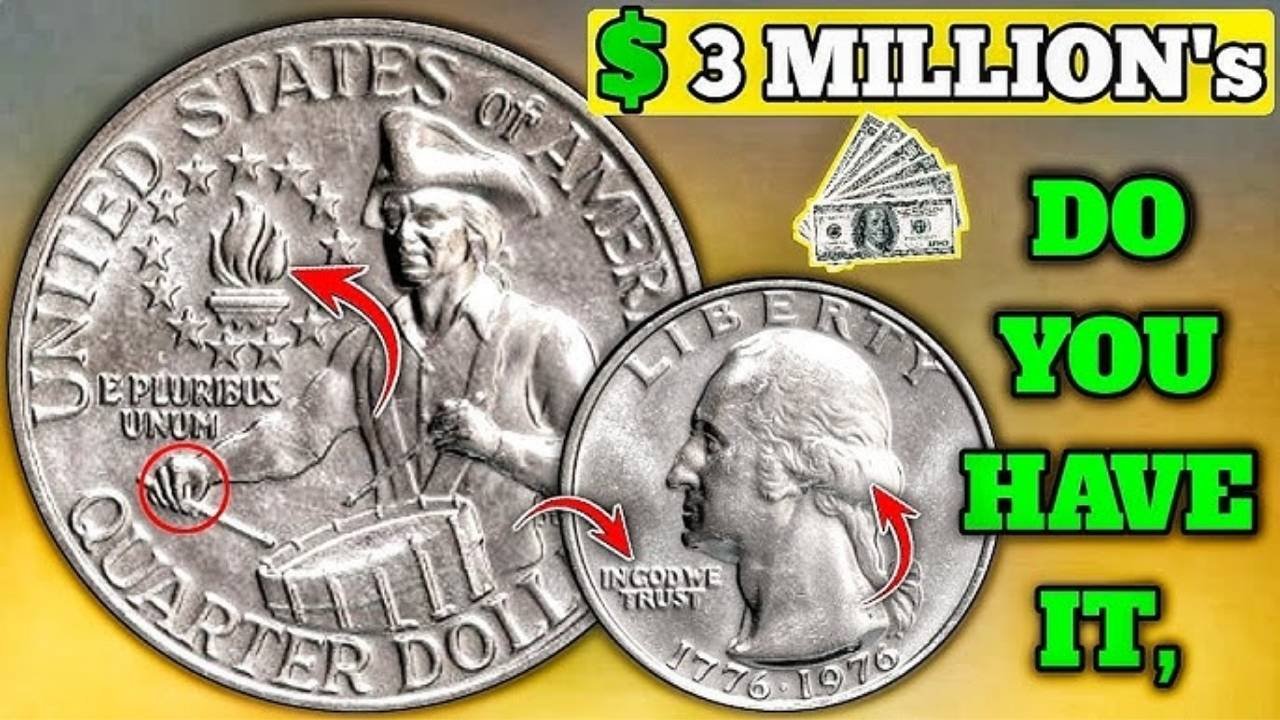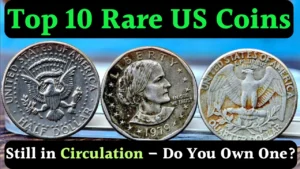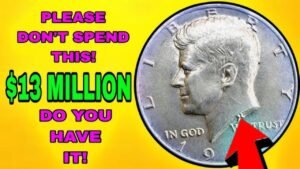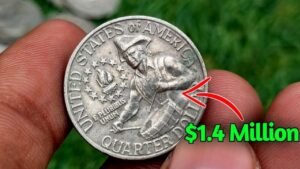Picture this: you’re digging through loose change and find a quarter that could buy you a fancy car—or even a house. That’s the magic of the 1975 Bicentennial Quarter, a coin minted to celebrate America’s 200th birthday.
While most are worth just 25 cents, certain rare versions with unique errors have sold for as much as $15,500 at auctions in 2024. Could one be hiding in your pocket? Let’s explore what makes these quarters so valuable and how you can find one.
Why Are Some 1975 Bicentennial Quarters So Valuable?
The 1975 Bicentennial Quarter, with its iconic drummer boy design and dual “1776-1976” date, was created to honor America’s independence. What makes certain quarters worth thousands isn’t their age but rare minting errors.
The most prized is the doubled die obverse, where the text or date appears slightly doubled, creating a blurry effect. Another valuable error? Some quarters were mistakenly struck on silver planchets, giving them a shinier look and heavier weight. Combine these errors with pristine condition, and you’ve got a coin that collectors are desperate to own.
Key Features of a Valuable 1975 Bicentennial Quarter
Not every 1975 quarter is a jackpot, but the rare ones have specific traits. Here’s what to look for:
| Feature | Details |
|---|---|
| Year | 1975 or 1976 (dual date “1776-1976”) |
| Mint | Denver (“D”), San Francisco (“S”), or none |
| Error | Doubled Die Obverse or Silver Planchet |
| Composition | Copper-Nickel or 40% Silver (rare) |
| Estimated Value | $500–$15,500 (depending on condition) |
The doubled die error and silver planchet versions are the holy grail for collectors, with one doubled die quarter fetching $15,500 in 2024.
How to Identify a Rare 1975 Bicentennial Quarter
Ready to hunt for treasure? Here’s how to spot a valuable 1975 quarter:
1. Check the Year and Design
Look for the “1776-1976” date and the drummer boy on the back. The front should feature George Washington’s portrait.
2. Spot the Doubled Die Error
Use a magnifying glass to inspect the front of the coin. Check the words “LIBERTY” and the date for any doubling or blurriness. This subtle error is what makes some quarters worth thousands.
3. Look for a Silver Planchet
Silver quarters have a brighter, shinier appearance and weigh slightly more (5.75 grams) than standard copper-nickel quarters (5.67 grams). A precise scale can help confirm this.
4. Check the Mint Mark
Look near Washington’s head for a “D” (Denver), “S” (San Francisco), or no mint mark (Philadelphia). Silver planchet errors are more common with “S” mint marks.
5. Keep It Uncleaned
Never clean a coin—it can ruin its value. Store it in a protective holder and get it appraised by a professional grading service like PCGS or NGC.
Where to Find These Rare Quarters
The best part? These quarters could be hiding in plain sight. Check your loose change, bank rolls, vending machine returns, or old coin jars at home. Collectors have found valuable coins in tip jars, inherited collections, or even spare change from a coffee shop. With over 1.6 billion Bicentennial Quarters minted, a rare one might still be out there waiting for you.
Coin Grading 101
A coin’s condition plays a huge role in its value. Here’s a quick guide to grading:
| Grade | Description |
|---|---|
| Poor | Heavily worn, barely readable |
| Good | Moderate wear, readable details |
| Fine | Light wear, clear details |
| Mint | Near-perfect, no visible wear |
A “Mint” condition quarter (MS65 or higher) with a doubled die or silver planchet error could be worth thousands.
What to Do If You Find a Rare Quarter
Think you’ve struck gold? Here’s what to do next:
- Handle Carefully: Use gloves to avoid damaging the coin with skin oils.
- Store Safely: Keep it in a soft plastic holder to protect its surface.
- Get It Graded: Contact PCGS or NGC for professional grading to confirm authenticity and value.
- Research Value: Look up recent auction sales to gauge its worth.
- Sell Smart: Consider auction houses, reputable coin dealers, or platforms like eBay (after grading) to get the best price.
The Thrill of the Coin Hunt
The chance to find a $15,000 quarter has sparked a frenzy among collectors and casual treasure hunters. Social media is buzzing with photos of potential finds, tips for spotting errors, and stories of lucky discoveries. Coin clubs are hosting events, and people are rifling through old piggy banks and family collections. Even if you don’t find a $15,000 quarter, other Bicentennial Quarters with minor errors or high grades can still be worth hundreds.
A Piece of American History
The 1975 Bicentennial Quarter is more than just a coin—it’s a snapshot of America’s 200th birthday celebration. Its patriotic drummer boy design and dual date make it a collector’s favorite. Whether you’re a seasoned numismatist or just curious, checking your change could lead to a life-changing discovery.
FAQs About the 1975 Bicentennial Quarter
Why is the 1975 Bicentennial Quarter valuable?
Rare errors like the doubled die obverse or silver planchet, along with pristine condition, make some quarters worth up to $15,500.
How do I know if my quarter is silver?
Look for an “S” mint mark and check its weight (5.75 grams). Silver quarters also have a brighter, shinier look.
Where can I get my coin appraised?
Visit a local coin shop or contact professional grading services like PCGS or NGC for an expert evaluation.
Are all 1975 Bicentennial Quarters worth a lot?
No, most are worth 25 cents. Only those with rare errors or in mint condition have high value.
Can I find these quarters in circulation?
Yes, they can still appear in loose change, bank rolls, or old collections, though rare versions are hard to find.
Next time you’re sorting through spare change, take a second glance at those Bicentennial Quarters. You might just uncover a hidden gem worth thousands!




